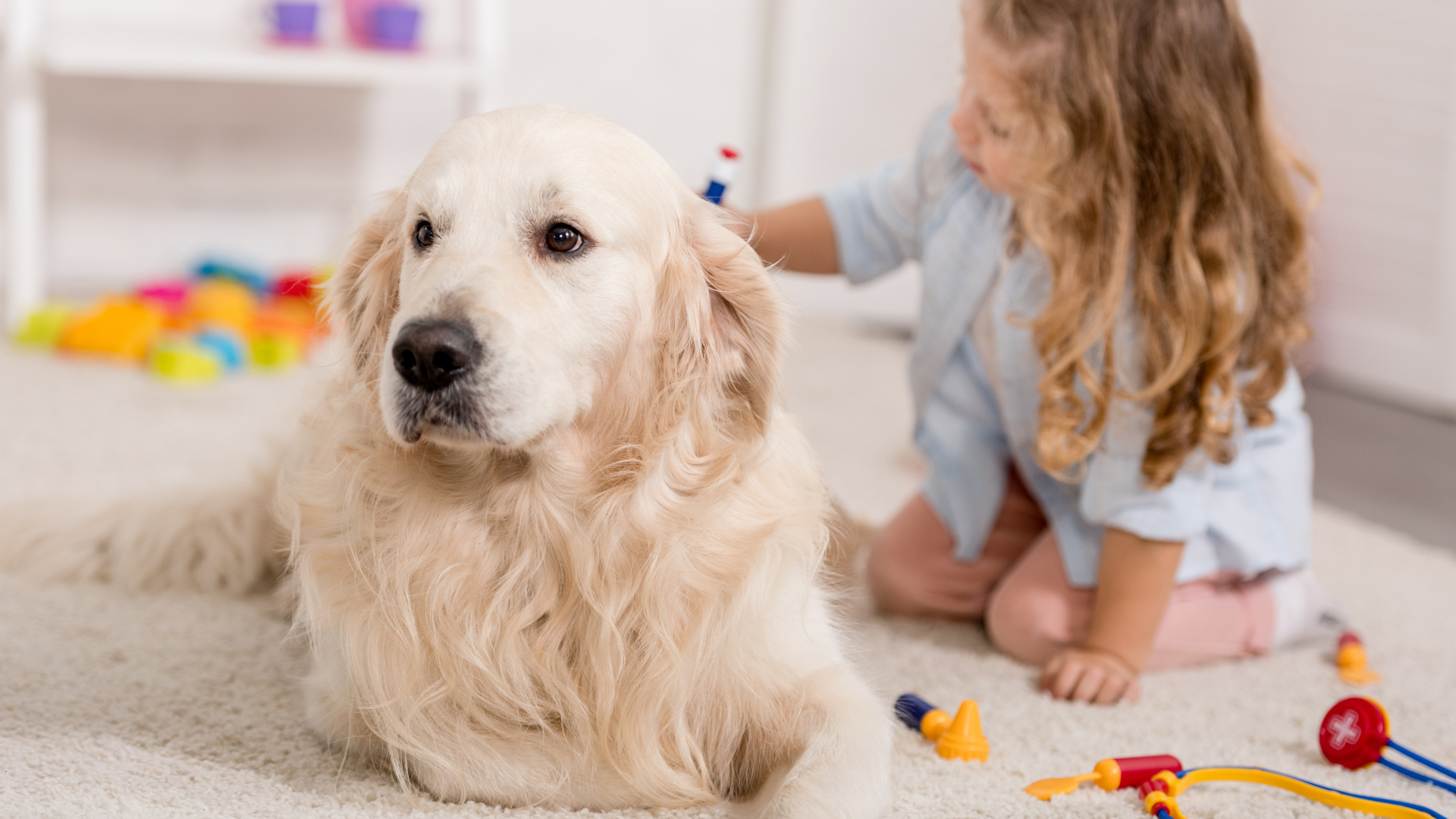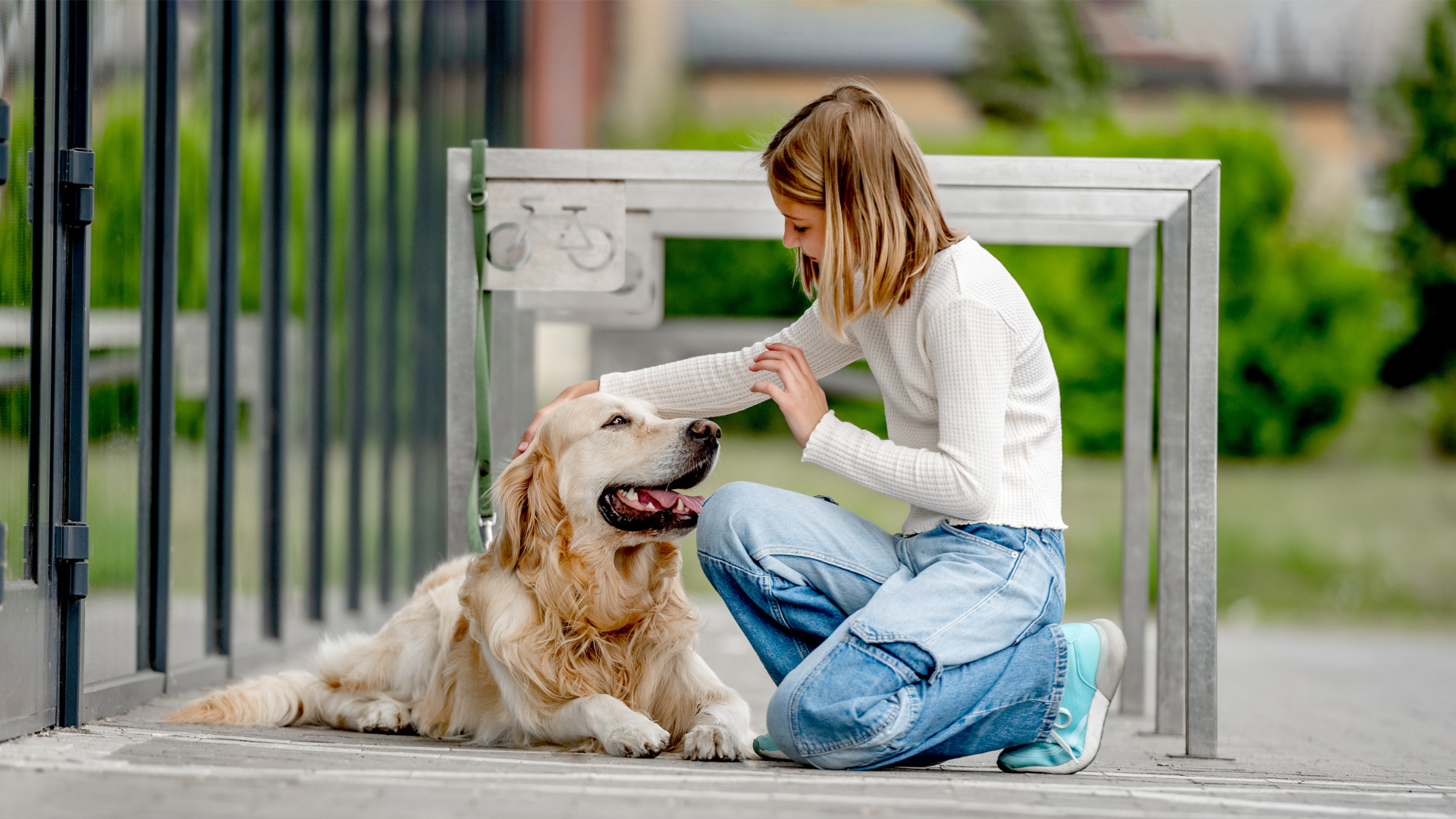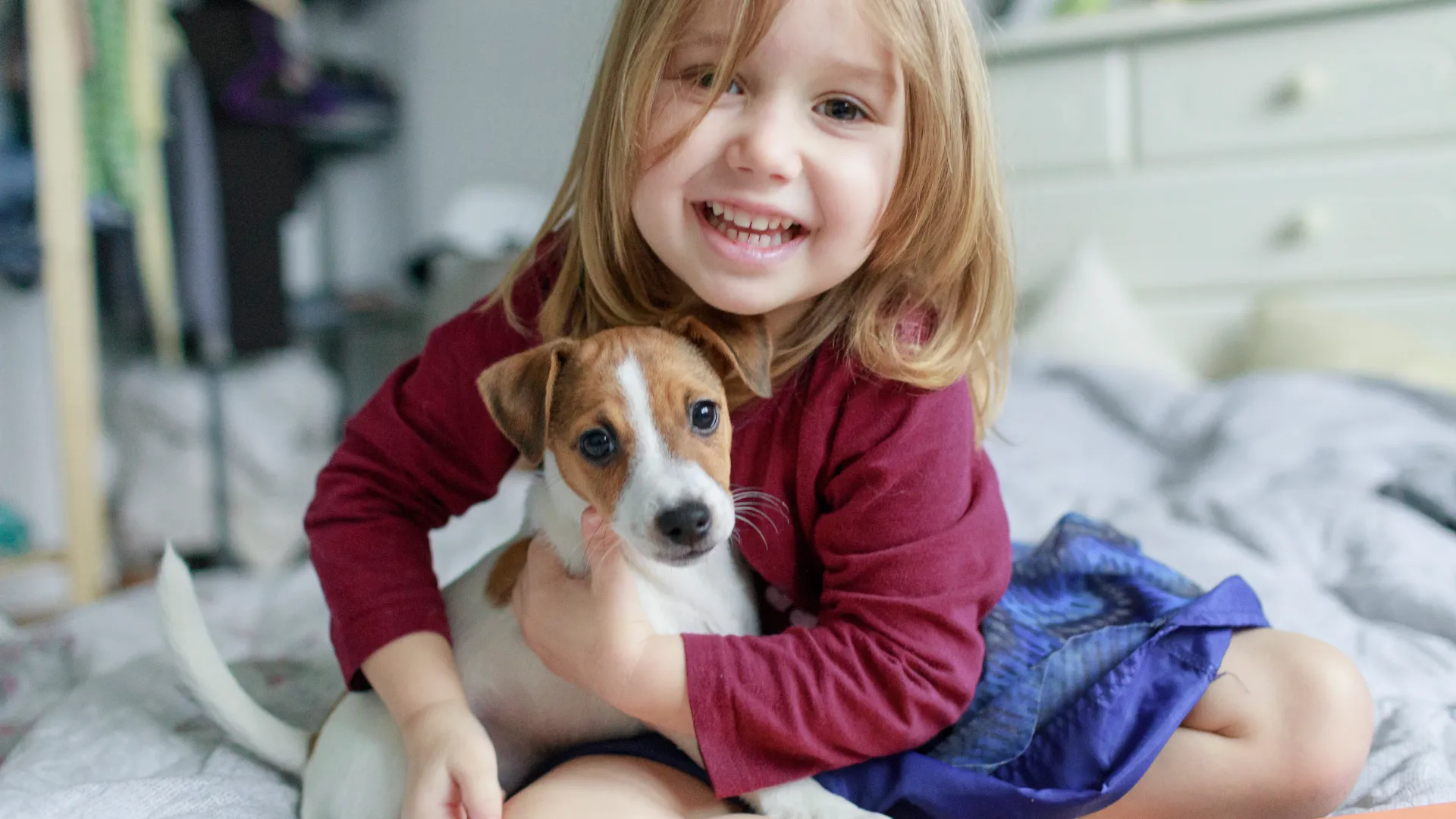Teaching kids responsibility is an essential part of parenting. It helps them develop a sense of accountability and prepares them for adulthood. One way to teach kids responsibility is through dog care tasks. Taking care of a pet dog requires a lot of responsibility, and it can be a great way to teach kids about the importance of taking care of things.

Dog care tasks can be simple or complex, depending on the age and ability of the child. Simple tasks like feeding the dog, giving them water, and taking them for a walk can be assigned to younger children. Older children can take on more complex tasks like grooming, training, and cleaning up after the dog. By assigning these tasks to kids, parents can teach them about time management, organization, and the importance of following through on commitments.
Teaching kids responsibility through dog care tasks also has many benefits for the dog. Dogs thrive on routine and structure, and assigning specific tasks to kids can help create a predictable and stable environment for them. Additionally, involving kids in dog care tasks can help strengthen the bond between the child and the dog, which can lead to a lifetime of love and companionship.
Understanding Responsibility and Pet Care

Defining Responsibility in Childhood
Responsibility is an essential trait that children must learn to develop to become successful adults. It is the ability to take ownership of one's actions and decisions. By teaching children responsibility through pet care tasks, parents can help them develop a sense of accountability and independence.
Through pet care tasks, children learn to be responsible for the well-being of another living being. They learn to feed, groom, and exercise their pets regularly, which helps them develop a sense of routine and discipline. Additionally, they learn to be patient, compassionate, and empathetic towards their pets.
Benefits of Pet Care for Child Development
Pet care tasks can provide numerous benefits for a child's development. Firstly, they help children develop a sense of self-esteem and self-worth. By taking care of their pets, children feel a sense of accomplishment and pride, which boosts their confidence.
Secondly, pet care tasks can help children develop their social skills. By taking their pets for walks, children can interact with other pet owners, which can help them develop their communication and socialization skills.
Finally, pet care tasks can help children develop their emotional intelligence. By caring for their pets, children learn to recognize and manage their emotions, as well as the emotions of others. This can help them develop empathy and compassion, which are essential traits for building strong relationships.
In conclusion, teaching children responsibility through pet care tasks can provide numerous benefits for their development. By defining responsibility in childhood and highlighting the benefits of pet care, parents can encourage their children to develop a sense of accountability and independence.
Choosing the Right Dog for Your Family

Assessing Your Family's Lifestyle
Before bringing a dog into your family, it's important to assess your family's lifestyle. Consider factors such as the size of your home, the amount of time you have to devote to a pet, and the activity level of your family members. If you have young children, it's important to choose a breed that is known for being gentle and patient with kids.
Dog Breeds and Temperaments
Different dog breeds have different temperaments, and it's important to choose a breed that matches your family's lifestyle. For example, if you live in a small apartment, a large, high-energy breed may not be the best choice. If you have allergies, consider a breed that is hypoallergenic. It's also important to research the breed's exercise needs, grooming requirements, and any potential health issues.
Allergies and Pet Considerations
If any family members have allergies, it's important to choose a breed that is hypoallergenic or has minimal shedding. It's also important to consider the financial cost of owning a dog, including food, grooming, and veterinary care. Additionally, if you plan to travel frequently, consider the cost of boarding or pet-sitting services.
Overall, choosing the right dog for your family is an important decision that requires careful consideration. By assessing your family's lifestyle, researching different breeds, and considering any allergies or financial considerations, you can ensure that you find the perfect furry companion for your family.

Age-Appropriate Dog Care Tasks
Teaching children responsibility through dog care tasks is a great way to instill a sense of accountability and empathy in them. However, it is important to assign age-appropriate tasks to ensure their safety and the well-being of the dog. Here are some suggested tasks for different age groups:
Tasks for Toddlers and Preschoolers
Toddlers and preschoolers can start with simple tasks that require minimal supervision. These tasks can include:
- Helping to fill the dog's water bowl
- Placing treats in the dog's bowl
- Throwing a ball or toy for the dog to fetch (with adult supervision)
Tasks for School-Aged Children
School-aged children can take on more responsibility and can be trusted with tasks that require more attention to detail. Some tasks that can be assigned to them are:
- Feeding the dog (with adult supervision)
- Brushing the dog's coat
- Walking the dog (with adult supervision)
Tasks for Teenagers
Teenagers can be given more complex tasks that require greater responsibility and maturity. These tasks can include:
- Cleaning up after the dog (e.g. picking up poop)
- Training the dog (with adult supervision)
- Taking the dog to the vet (with adult supervision)
It is important to note that adult supervision is still necessary for some tasks, even for teenagers. Additionally, it is important to ensure that the child is comfortable with the task and that the dog is not put in harm's way. By assigning age-appropriate tasks, children can learn the importance of responsibility and develop a strong bond with their furry companion.
Teaching Techniques for Dog Care Responsibilities
Teaching kids responsibility through dog care tasks can be a rewarding experience for both the child and the dog. However, it is important to use effective teaching techniques to ensure the child learns responsibility and the dog is well taken care of. Here are some techniques to consider:

Creating a Routine
One effective technique for teaching kids responsibility through dog care tasks is to create a routine. This involves setting a regular schedule for feeding, walking, and other dog care tasks. By doing this, the child learns the importance of consistency and reliability in caring for the dog. A routine also helps the dog feel more secure and comfortable, as they know what to expect from their caregiver.
Using Positive Reinforcement
Positive reinforcement is another effective technique for teaching kids responsibility through dog care tasks. This involves rewarding the child for completing tasks and exhibiting responsible behavior. Rewards can be anything from verbal praise to small treats or privileges. By using positive reinforcement, the child is encouraged to continue exhibiting responsible behavior and caring for the dog.
Setting Realistic Expectations
Setting realistic expectations is crucial when teaching kids responsibility through dog care tasks. It is important to consider the child's age, abilities, and the dog's needs when assigning tasks. For example, a young child may not be able to handle the responsibility of walking a large dog, while an older child may be capable of taking on more complex tasks. By setting realistic expectations, the child is more likely to succeed in their tasks and feel a sense of accomplishment.
Overall, teaching kids responsibility through dog care tasks requires patience, consistency, and effective teaching techniques. By creating a routine, using positive reinforcement, and setting realistic expectations, children can learn the importance of responsibility and caring for others while providing a loving home for their furry friend.
Safety First: Kids and Dogs
Teaching kids responsibility through dog care tasks is a great way to instill important values in children. However, it is important to prioritize safety when it comes to children and dogs. Here are some tips for ensuring a safe environment for both your child and your furry friend.
Educating About Dog Body Language
It is crucial for children to understand how to read a dog's body language. Teach your child to recognize signs of aggression, fear, and stress in dogs. This can help prevent accidents and ensure that your child knows when to approach a dog and when to give them space.
Supervising Child and Dog Interactions
Always supervise your child's interactions with your dog. Even the most well-behaved dog can become agitated or scared, which can lead to accidents. Make sure your child knows how to approach and pet the dog in a calm and gentle manner.
Handling Emergencies
In case of an emergency, it is important to have a plan in place. Teach your child what to do if the dog becomes aggressive or if someone gets bitten. Make sure your child knows how to call for help and when to seek medical attention.
By prioritizing safety and educating your child about responsible dog care, you can create a happy and healthy environment for both your child and your furry friend.

Incorporating Fun and Education
Teaching kids responsibility through dog care tasks can be a fun and educational experience for the whole family. Here are some interactive dog care activities and learning opportunities that can be incorporated into the daily routine:
Interactive Dog Care Activities
- Fetch: Playing fetch with a dog not only provides exercise but also helps to strengthen the bond between the child and the dog. This activity can be turned into a learning opportunity by teaching the child about the importance of physical activity for both humans and dogs.
- Hide-and-seek: Hiding treats or toys around the house or yard and having the child help the dog find them can be a fun and interactive game. This activity can also teach the child about the dog's sense of smell and how it is used to find things.
- Training: Teaching the dog new tricks or commands can be a great way to engage the child and the dog in a fun activity. This activity can also teach the child about the importance of positive reinforcement and consistency in training.
Learning Opportunities Through Dog Care
- Feeding: Having the child help with feeding the dog can teach responsibility and the importance of providing proper nutrition for the dog. This activity can also be used to teach the child about measuring and portion control.
- Grooming: Brushing the dog's coat and cleaning their ears and teeth can be a great way to teach the child about hygiene and the importance of keeping the dog clean and healthy.
- Walking: Walking the dog can be a great way to teach the child about exercise and the importance of daily physical activity. This activity can also be used to teach the child about proper leash handling and obedience training.
Incorporating these fun and educational activities into the daily routine can help teach kids responsibility through dog care tasks while also providing a great bonding experience for the whole family.
Monitoring Progress and Adjusting Responsibilities
Teaching kids responsibility through dog care tasks is an excellent way to instill important values in them. However, it is important to monitor their progress and adjust their responsibilities as needed to ensure they are learning and growing.

Tracking Responsibilities with Charts
One effective way to monitor progress is by using charts. A chart can help you keep track of the tasks your child is responsible for and how well they are completing them. You can create a simple chart with columns for the task, the frequency, and a space to mark whether the task was completed.
Using a chart can help your child see their progress and take pride in their accomplishments. It can also help you identify areas where they may need more guidance or support.
Adapting Tasks as Children Grow
As children grow and develop, their abilities and responsibilities should also evolve. It is important to adjust the tasks they are responsible for to ensure they are appropriately challenged and continue to learn and grow.
For example, a young child may be responsible for feeding the dog once a day, while an older child may be responsible for feeding the dog twice a day and taking them for a walk. By gradually increasing their responsibilities, you can help your child develop important skills and a sense of independence.
Overall, monitoring progress and adjusting responsibilities is key to teaching kids responsibility through dog care tasks. By using charts and adapting tasks as children grow, you can help them develop important life skills and a sense of pride in their accomplishments.
Challenges and Solutions in Teaching Responsibility
Common Obstacles and How to Overcome Them
Teaching kids responsibility through dog care tasks can be challenging. One common obstacle is that kids may lose interest or forget to complete their tasks. To overcome this, parents can create a schedule or checklist that outlines the tasks and when they need to be done. This can help kids stay on track and feel a sense of accomplishment when they complete their tasks.
Another challenge is that kids may not fully understand the importance of their tasks. To address this, parents can explain the impact that their tasks have on the dog's health and well-being. For example, they can explain that feeding the dog on time helps prevent hunger and keeps the dog healthy.
Maintaining Consistency in Dog Care
Maintaining consistency in dog care is important for teaching kids responsibility. Parents can create a routine for their kids to follow that includes feeding, walking, and playing with the dog at the same time each day. This can help kids develop a sense of responsibility and accountability.
Another way to maintain consistency is to assign specific tasks to each child. For example, one child can be responsible for feeding the dog, while another child can be responsible for walking the dog. This can help ensure that each task is completed consistently and that no task is forgotten.
Overall, teaching kids responsibility through dog care tasks can be challenging, but it is also rewarding. By overcoming obstacles and maintaining consistency, parents can help their kids develop a sense of responsibility and compassion for animals.
Conclusion: Fostering Lifelong Skills Through Dog Care

Teaching kids responsibility through dog care tasks can have a significant impact on their development. By assigning age-appropriate tasks, children can learn valuable skills such as feeding, grooming, and exercising a pet. These tasks not only teach responsibility, but also empathy and compassion towards animals.
Through dog care, children can learn the importance of consistency and routine. They can develop time management skills as they learn to balance their dog care tasks with their other responsibilities. Additionally, children can learn to communicate effectively with their pets, which can translate into better communication skills with people.
Dog care tasks can also foster a sense of independence in children. As they take on more responsibility for their pet's well-being, they can feel a sense of accomplishment and pride in their ability to care for another living being.
Overall, teaching kids responsibility through dog care tasks can be a rewarding experience for both the child and the pet. It can help children develop important life skills that they can carry with them into adulthood.
FAQs
- At what age can I start involving my child in dog care tasks?
- Start with simple, supervised tasks as early as 3 years old, gradually increasing responsibilities as they grow.
- How do I ensure my child's safety when caring for a dog?
- Always supervise interactions between children and dogs, and teach safe handling techniques from a young age.
- What if my child loses interest in caring for the dog?
- Keep tasks age-appropriate and make them enjoyable. Offer encouragement and find ways to reignite their interest.
- Should I reward my child for dog care tasks?
- Yes, using positive reinforcement like praise or small rewards can motivate children to be responsible.
- How can I use dog care tasks to teach other life skills?
- Discuss responsibility, consistency, and empathy within the context of caring for the dog, relating these lessons to everyday life.




